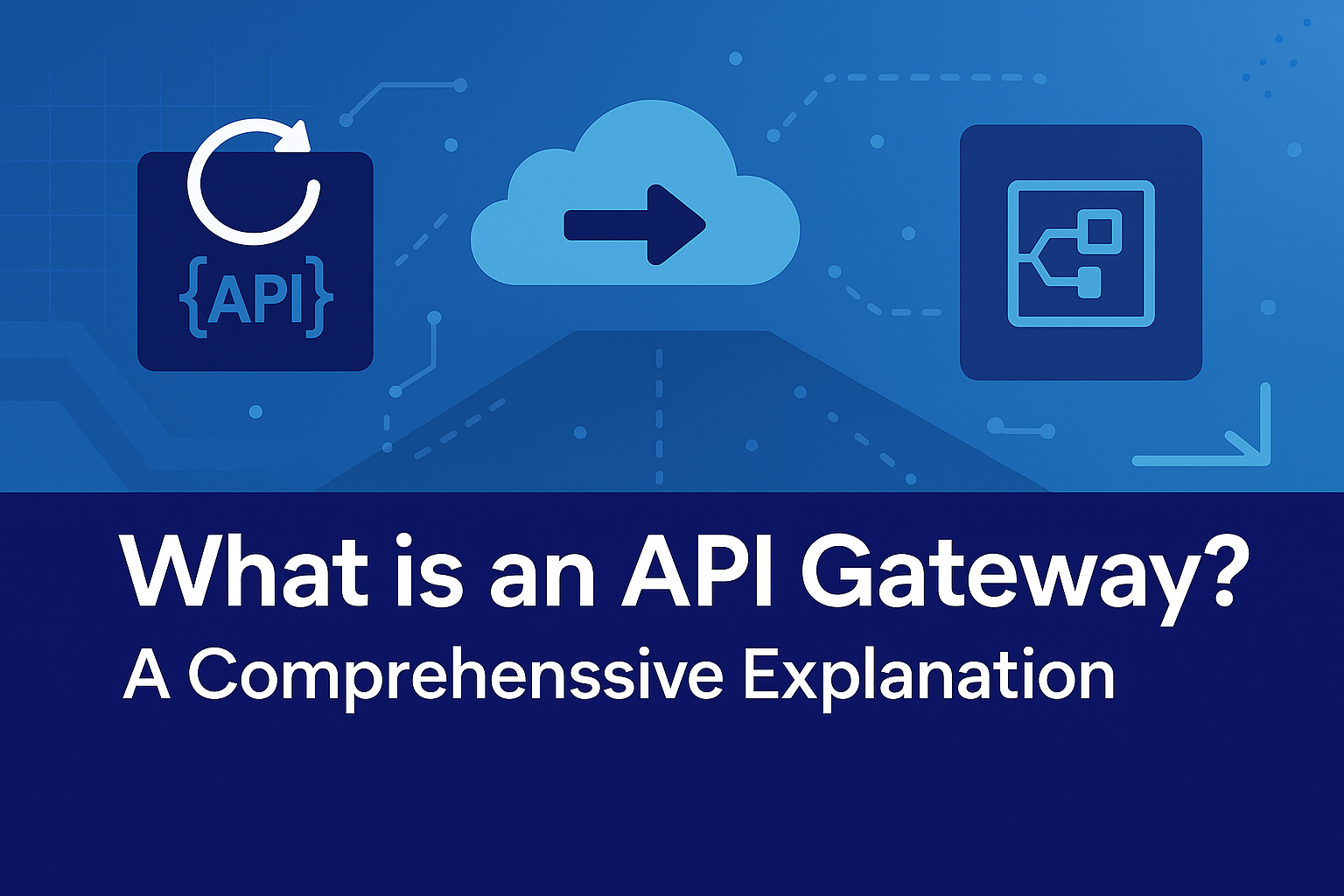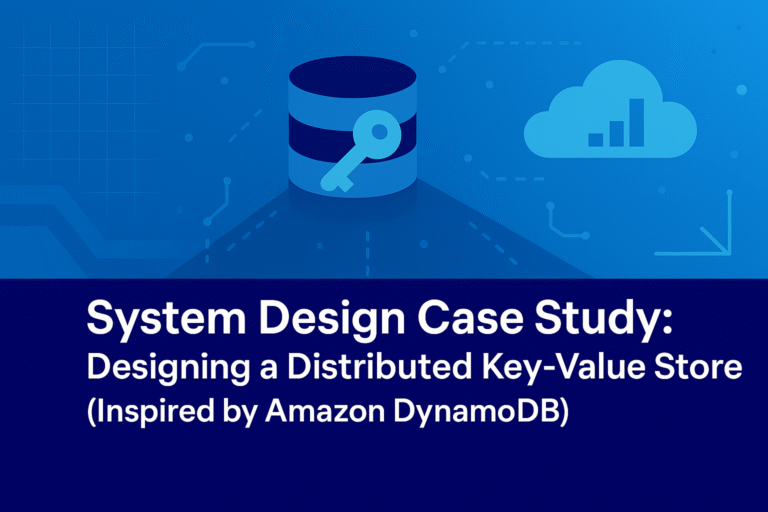Concept Explanation
An API Gateway is a specialized server that acts as a centralized entry point for managing, routing, and processing API requests in distributed systems, particularly in microservices architectures. API gateways have become indispensable for modern applications, enabling seamless interaction between clients (e.g., web browsers, mobile apps) and backend services by abstracting the complexity of multiple microservices. They serve as a unified interface, handling tasks such as authentication, rate limiting, request transformation, and analytics, thereby enhancing scalability, security, and maintainability.
The primary role of an API gateway is to streamline communication by receiving client requests, directing them to appropriate backend services, and returning responses, often aggregating or transforming data to meet client needs. Unlike traditional reverse proxies, which focus on general request routing and caching, API gateways are tailored for API-specific functionalities, supporting REST, GraphQL, gRPC, and other protocols. They are critical in environments where microservices expose numerous APIs, ensuring consistent management and monitoring across services.
In system design, API gateways address challenges such as service discovery, load balancing, and security enforcement, making them a focal point for discussions in technical interviews and production system architectures. This detailed exploration covers the architecture, operational mechanics, benefits, implementation considerations, trade-offs, and real-world applications of API gateways, providing a thorough understanding for technical professionals.
Detailed Mechanism of API Gateway Operation
Architecture
An API gateway’s architecture comprises several key components:
- Request Handler: Receives incoming client requests (e.g., HTTP POST to /api/v1/orders) and routes them to the appropriate backend service based on predefined rules or service discovery mechanisms.
- Authentication/Authorization Module: Validates client credentials using protocols like OAuth 2.0, JWT, or API keys, ensuring secure access.
- Rate Limiting/Throttling: Enforces quotas (e.g., 1,000 requests/second per client) to prevent abuse and ensure fair resource usage.
- Request/Response Transformation: Modifies payloads (e.g., JSON to XML, stripping sensitive fields) to meet client or service requirements.
- Service Orchestration: Aggregates responses from multiple microservices (e.g., combining user profile and order data) into a single client response.
- Analytics and Monitoring: Collects metrics (e.g., latency, error rates) and logs for performance tracking and debugging.
- Caching: Stores frequently accessed responses (e.g., product catalog data) to reduce backend load.
- Control Plane: A management interface for configuring routes, policies, and integrations, typically via APIs or dashboards.
The gateway operates at the application layer (OSI Layer 7), handling HTTP/HTTPS, WebSocket, or other protocols, and integrates with service registries (e.g., Consul, Eureka) for dynamic routing in microservices environments.
Operational Process
The API gateway processes requests through the following steps:
- Client Request: A client (e.g., a mobile app) sends a request to the gateway’s endpoint (e.g., https://api.example.com/v1/orders).
- Authentication: The gateway validates credentials (e.g., JWT in the Authorization header), rejecting unauthorized requests with a 401 status.
- Rate Limiting: Checks if the client exceeds quotas (e.g., 1,000 req/s), returning a 429 status if violated.
- Routing: Maps the request to the target microservice (e.g., /orders → orders-service:8080) using a service registry or static rules.
- Transformation: Modifies the request if needed (e.g., adds headers, reformats payload) and forwards it to the backend.
- Response Handling: Receives the backend response, aggregates data if multiple services are involved, and transforms it (e.g., filters fields) before sending it to the client.
- Logging and Metrics: Records request details (e.g., latency, status) for analytics, stored in systems like Prometheus or CloudWatch.
This process typically completes in 10-50 milliseconds, depending on network latency, caching, and backend performance.
Supported Protocols
- REST: Handles HTTP methods (GET, POST, etc.) with JSON/XML payloads.
- GraphQL: Supports client-specified queries for flexible data retrieval.
- gRPC: Manages high-performance binary communication for internal microservices.
- WebSocket: Facilitates real-time bidirectional communication (e.g., for chat applications).
Real-World Example: Netflix’s API Gateway
Consider Netflix’s streaming platform, serving over 300 million users globally. The Netflix API gateway (built on Zuul or AWS API Gateway) manages requests for services like video streaming, user authentication, and recommendation generation. For example:
- A user in Mumbai requests https://api.netflix.com/v1/recommendations to fetch personalized titles.
- The gateway authenticates the request using OAuth 2.0, verifying the user’s subscription status.
- It enforces a rate limit of 100 requests/second per user, returning a 429 if exceeded.
- The request is routed to the recommendation microservice, which queries user history and ML models.
- The gateway aggregates responses from the recommendation and metadata services, transforming them into a unified JSON payload (e.g., { “titles”: [{ “id”: “123”, “name”: “Stranger Things” }], “genres”: [“Drama”] }).
- Metrics (e.g., p99 latency < 100ms, 10,000 req/s) are logged to Prometheus, with a 95% cache hit rate for static metadata.
This setup supports 200 million daily API calls, maintaining 99.99% uptime and sub-100ms response times.
Implementation Considerations
- Deployment: Deploy the API gateway on a cloud platform (e.g., AWS API Gateway, Azure API Management) or as a self-hosted solution (e.g., Kong, Tyk) on Kubernetes clusters with 16GB RAM nodes. Use serverless options for auto-scaling.
- Configuration: Define routes (e.g., /v1/orders → orders-service:8080) using YAML or REST APIs. Set up authentication with OAuth 2.0, rate limits (e.g., 1,000 req/s/client), and caching (TTL 1 hour for static data).
- Integration: Connect to service registries (e.g., Consul) for dynamic discovery of microservices. Integrate with identity providers (e.g., Okta) for SSO and monitoring tools (e.g., Grafana) for dashboards.
- Security: Enforce HTTPS with TLS 1.3, validate JWT tokens, and apply OWASP-compliant rules to block injection attacks. Use API keys for public access and IP whitelisting for internal services.
- Monitoring and Analytics: Track metrics (latency < 100ms, error rate < 0.1%, throughput 10k req/s) with Prometheus, log requests to ELK Stack, and analyze usage for billing (e.g., $0.50/million requests).
- Testing: Validate with Postman for API correctness, JMeter for load testing (1M req/day), and chaos engineering (e.g., Chaos Monkey) to ensure resilience.
Benefits of API Gateways
- Unified Entry Point: Simplifies client interactions by abstracting multiple microservices (e.g., 20 services behind one endpoint).
- Scalability: Handles traffic spikes (e.g., 50k req/s) via auto-scaling and load balancing.
- Security: Centralizes authentication, rate limiting, and attack mitigation (e.g., blocks 99% of DDoS attempts).
- Performance: Reduces latency with caching (90% hit rate) and optimizes backend calls via aggregation.
- Observability: Provides insights into API usage, errors, and performance, enabling data-driven optimizations.
- Developer Productivity: Simplifies microservice development with standardized routing and transformation.
Trade-Offs and Strategic Decisions
- Complexity vs. Functionality: API gateways add management overhead (e.g., configuring 100 routes) but enable advanced features like orchestration. Decision: Use for microservices-heavy systems (e.g., > 10 services), starting with a serverless gateway for simplicity.
- Latency vs. Features: Authentication and rate limiting add 5-10ms latency but enhance security and fairness. Decision: Apply selective throttling (e.g., higher limits for premium users) to balance performance.
- Cost vs. Scalability: Serverless gateways cost $0.50/million requests but scale infinitely, while self-hosted solutions require $1,000/month for infrastructure. Decision: Choose serverless for variable traffic, validated by cost-benefit analysis (e.g., $10k savings during peaks).
- Consistency vs. Availability: Caching improves availability but risks stale data (e.g., 5-minute lag). Decision: Use short TTLs (1 hour) for dynamic APIs, ensuring freshness for critical services like billing.
- Strategic Approach: Prioritize gateway deployment in high-traffic regions (e.g., India, US), integrate with observability tools, and iterate based on metrics (e.g., reduce latency by 20% via caching). Start with a minimal setup (5 services), scaling as microservices grow, validated by A/B testing for user impact.
Conclusion
An API gateway serves as a centralized entry point for managing API requests, offering authentication, routing, transformation, and analytics in microservices architectures. The Netflix example illustrates its role in handling global-scale traffic with high performance and reliability. Implementation considerations and trade-offs guide strategic decisions, ensuring alignment with system goals.




